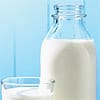
What's Hot
What's Hot
News flashes are posted here frequently to keep you up-to-date with the latest advances in health and longevity. We have an unparalleled track record of breaking stories about life extension advances.
Red wine polyphenols help prevent brain damage in rat model of stroke
Seven male rats were given 30 milligrams per kilogram daily of a wine polyphenol extract containing proanthocyanidins, anthocyanins, catechin, hydoxycinnamic acids, flavonols, and tannins (but no alcohol) dissolved in their drinking water for one week, while a control group received unenhanced drinking water. Middle cerebral artery occlusion was conducted under anesthesia to mimic human embolic stroke, followed by reperfusion (restoration of blood flow). Five rats received sham operations. Intracerebral microdialysis monitored the release of amino acid and energy metabolites that normally follows stroke. The investigators found that treatment with red wine polyphenols completely prevented the ischemia-induced burst of damaging excitatory amino acids that occurred in the untreated rats. Residual cerebral blood flow was enhanced during occlusion as well as during reperfusion in the polyphenol-treated group, due to a significantly larger interior diameter of several arteries, which suggested an outward remodeling of the blood vessels. Twenty-four hours after blood flow was restored, infarcted (damaged) lesions were observed in just two of the seven animals receiving polyphenols, and were much smaller than those observed in the control group. In the other five rats in this group, only edema was observed. "Altogether, red wine polyphenol compounds, by reducing disorder of cerebral blood flow, may prevent stroke and may establish early reperfusion during the acute phase of stroke, reducing the magnitude and the extent of tissue injury," the authors write. "These data provide an experimental basis for the beneficial effects of red wine polyphenol compounds for stroke protection either as prevention or treatment of the different phases of the disease," they conclude. —D Dye Vitamin D analogue improves survival in dialysis patients
Csaba P. Kovesdy and colleagues examined data from 520 male veterans who were treated at the Salem Veterans Affairs Medical Center for chronic kidney disease without having started dialysis. Two hundred fifty-eight of the participants were treated with calcitriol for a median of 2.1 years. During an approximate two year follow-up period, 126 patients died before being needing dialysis, and dialysis was initiated in 131 subjects. Men who received calcitriol had 65 percent lower adjusted rate of mortality compared with men who did not receive the compound. Calcitriol was also found to significantly reduce the combined risk of death and progression to dialysis. The authors suggest that suppression of elevated parathyroid hormone concentrations may be the mechanism of calcitriol in reducing mortality due to the relationship of the condition with cardiovascular morbidity and mortality, however, they note that the effect of activated vitamin D therapy may be much wider ranging since vitamin D directly affects the cardiovascular system and other areas. They remark that even those who had relatively lower parathyroid hormone levels at the beginning of the study experienced improved calcitriol-associated survival. Randomized clinical trials with different activated vitamin D analogues are recommended to confirm the current study's findings. —D Dye Arginine/NAC combo improves endothelial function
Valentino Martina, MD of the University of Torino and his Italian colleagues enrolled 24 men between the ages of 51 and 74 who were being treated for type 2 diabetes and hypertension. The participants were divided to receive 1200 milligrams NAC plus 1200 milligrams arginine per day, or a placebo for six months. Arginine is known to enhance nitric oxide production, which improves endothelial function, and N-acetylcysteine was administered to improve antioxidant defense and nitric oxide availability. Blood pressure was measured before and after the treatment period, and blood samples were evaluated for cholesterol, triglycerides, oxidized low density lipoprotein (ox-LDL), C-reactive protein, intercellular and vascular-cell adhesion molecules (ICAM and VCAM), nitrotyrosine, plasminogen activator inhibitor-1, fibrinogen, nitrites/nitrates, and other factors. Intima-media thickness, which evaluates atherosclerosis, was also assessed at these time points. At the end of six months, both systolic and diastolic blood pressure had declined by an average of 5 mmHg in the group that received L-arginine and NAC. Total and LDL cholesterol, oxidized LDL, C-reactive protein, ICAM and VCAM, nitrotyrosine, fibrinogen, plasminogen activator inhibitor-1 and intima-media thickness were also lower, while HDL cholesterol and nitrites/nitrates levels were higher. For men who received a placebo, total, LDL and oxidized LDL cholesterol levels increased while other parameters were unchanged. "In conclusion, the combined NAC and arginine administration seems to be a successful and well-tolerated antiatherogenic therapy, capable to improve the endothelial function in hypertensive diabetic male patients, since it reduces oxidative stress and, at the same time, promotes nitric oxide antiatherosclerotic effects," the authors write. "Our study's results, therefore, give prominence to its potential use in the primary and secondary cardiovascular prevention in type 2 diabetic patients." —D Dye
Cognitive decline declines
“We know mental stimulation has an impact on the way a person’s brain is ‘wired,’ and that education early in life likely helps build up a person’s cognitive reserve," Dr Langa observed. "We also know cardiovascular health has a close link with brain health. So what we may be seeing here is the accumulated effects of better education and better cardiovascular prevention among the people who were over age 70 in 2002, compared with those who were over age 70 in 1993.” "The trend toward improved cognitive status is consistent with a dramatic decline in chronic disability among older Americans over the past two decades, especially in the areas of everyday function that depend on cognition," noted Richard Suzman, PhD of the NIA which partially funded the study. “It will be important to pinpoint the influence of factors such as increased education, exercise, medications, cardiovascular health, and lifestyle to discover which ones contributed to this trend and to also replicate the findings in other studies.” —D Dye Cancer death rates continue their decline
The report, entitled Cancer Statistics 2008, reveals that American men have experienced a 18.4 percent and women a 10.5 decrease in cancer death rates since the early 1990s. Although the actual number of cancer deaths in the United States increased between 2004 to 2005 (which can be due to population growth), the rate of cancer mortality declined by 1 percent, which is a less dramatic decline than that documented between 2002 and 2003, and 2003 and 2004 when a 2 percent decline was observed. The report notes that 50 percent of all newly diagnosed cancers in men involve those of the prostate, lung and bronchus, and colon and rectum. For women, cancers of the breast, lung and bronchus, and colon and rectum will account for half of the cases diagnosed this year. Mortality rates for all of these have declined, except for lung cancer in women. In men under 40 and women under 20, the leading cause of cancer mortality is leukemia. “The increase in the number of cancer deaths in 2005 after two years of historic declines should not obscure the fact that cancer death rates continue to drop, reflecting the enormous progress that has been made against cancer during the past 15 years,” American Cancer Society chief executive officer John R. Seffrin, PhD stated. “While in 2005 the rate of decline was not enough to overtake other population factors, the fact remains that cancer mortality rates continue to drop, and they’re doing so at a rate fast enough that over a half million deaths from cancer were averted between 1990/1991 and 2004.” —D Dye Diets high in folate protect against most common type of stroke
The researchers sought to determine the relationship between dietary folate, vitamin B6, vitamin B12 and the amino acid methionine (all which are involved with homocysteine metabolism) on the risk of different types of stroke. They evaluated dietary questionnaire responses from 26,556 male smokers enrolled in the Alpha-Tocopherol, Beta-Carotene Prevention Study, which was established between 1985 and 1988 to determine whether supplementation with vitamin E and beta-carotene could help reduce lung cancer incidence. Over an average 13.6 year follow-up period, 2,702 cerebral infarctions, 383 intracerebral hemorrhages, and 196 subarachnoid hemorrhages occurred. For men whose intake of folate was in the top one-fifth of participants there was a 20 percent lower risk of cerebral infarction compared with those in the lowest fifth. The other nutrients evaluated in the study were not significantly associated with any type of stroke. The authors remark that the relationship between folate and stroke risk is plausible because the vitamin lowers blood homocysteine when supplemented. Homocysteine, which is formed from methionine, causes vascular damage when elevated, and increases procoagulant activity, both of which contribute to stroke. The results of meta-analyses suggest each 3 micromole per liter decrease in blood homocysteine corresponds to a 19 to 24 percent stroke risk reduction. "Although these observational data do not prove a causal relation, they indicate that high consumption of folate-rich foods may play a role in the prevention of stroke," the authors conclude. —D Dye Disability may have greater impact on longevity than disease
In the background information provided by the authors, they explain, "Although it is commonly held that survival to age 100 years entails markedly delaying or escaping age-related morbidities, nearly one-third of centenarians have age-related morbidities for 15 or more years. Yet, we have previously observed that many centenarians compress disability toward the end of their lives. Therefore, we hypothesize that for some centenarians, compression of disability rather than morbidity is a key feature for survival to old age." The investigation included 216 men and 523 women aged 97 or older who participated in the New England Centenarian Study. Questionnaire responses concerning health history were used to divide the participants into "survivors," who developed aging-associated diseases before the age of 85, and "delayers," who became ill later in life. Thirty-two percent of the subjects were classified as survivors and 68 percent as delayers. Among the survivors, 72 percent of the men and 34 percent of the women were found to have a good level of independence as indicated by tests of activities of daily living. “Morbidity was not compressed toward the end of these exceptionally long life spans,” the authors write. “Yet, centenarians who had developed heart disease and/or hypertension before age 85 years and still survived to 100 years demonstrated similar levels of function as those who delayed morbidity until after age 85 years.” “Determining the mechanisms that facilitate the delay or escape of disability in the face of clinically evident age- and mortality-associated morbidities merits further investigation,” they conclude. —D Dye Calcium supplements benefit adolescent bone
Researchers at the University of Sheffield in England enrolled 96 girls aged 11-12 years, whose calcium intake averaged 636 milligrams per day. The girls received a drink containing 792 milligrams calcium from calcium citrate malate or a placebo for 18 months, followed by a two year period during which they received no supplements. Calcium intake from diet was assessed from records obtained upon enrollment and throughout the treatment period. Blood tests measured four markers of bone resorption and serum parathyroid hormone levels at the beginning of the study and every six months until the end of the treatment period. Bone mineral density and bone mineral content were also evaluated at these time points and at 42 months. Over the eighteen month period, girls who received supplemental calcium experienced significantly greater gains in bone mineral content with the exception of the hip, and bone mineral density was greater at all sites compared with the group that received a placebo; however, at 42 months, the differences were no longer observed. Bone resorption markers and parathyroid hormone levels were both lower in the supplemented group at the end of the treatment period. "This study contradicts the conclusion of the meta-analysis that calcium supplementation is ineffective in enhancing bone mineralization at the spine and hip during growth," the authors write. "It does agree with conclusions that calcium supplementation is effective at the total body and that the effect is transitory." "The likely mechanism for the effect of calcium is suppression of bone turnover, which is reversed upon supplement withdrawal," they conclude. —D Dye Levels of several key vitamins lower in morbidly obese
The study included 110 obese men and women, and 58 healthy individuals with a normal body mass index who served as controls. Blood samples were analyzed for vitamins A, B1, B2, B6, B12, C, 25-hydroxyvitamin D, lipid-standardized vitamin E, and folic acid. C-reactive protein, a marker of inflammation, and homocysteine were also measured. Those who were obese were found to have lower levels of vitamins B6, C, D, and E than nonobese participants, despite a presumably greater intake of food. Inadequate levels of these vitamins occurred in 11 to 38 percent of the obese, and C-reactive protein levels were moderately elevated in 59 percent of this group. The authors suggest that dietary and lifestyle habits could be the most important reason for low levels of vitamins among the morbidly obese, and that decreased fruit and vegetable intake may be to blame. Other factors, such as body composition, and systemic inflammation may contribute to the finding. Obesity is associated with chronic low-grade inflammation, and systemic inflammation has been linked with a reduction in the serum levels of a number of vitamins. Because this type of study cannot establish cause and effect relations, the authors add that "Randomized trials are therefore necessary to evaluate whether morbidly obese patients with low vitamin concentrations benefit from supplementation." —D Dye Soy lowers cardiovascular disease risk factors in diabetics with kidney disease
Leila Azadbakht, PhD, of Isfahan University of Medical Sciences in Iran and her colleagues enrolled 18 men and 23 women with diabetic nephropathy in a four year trial which compared the effect of diets containing 35 percent soy protein in addition to 35 percent animal and 30 percent vegetable protein, with diets containing the standard 70 percent animal protein and 30 percent vegetable protein. Blood samples were analyzed for fasting plasma glucose, total cholesterol, low density lipoprotein (LDL) cholesterol, C-reactive protein, triglycerides, creatinine and urea nitrogen, and urine samples for creatinine and protein, at the beginning of the study and every six months for four years. At the study's conclusion, the group that received soy protein had experienced a significant decline in plasma fasting glucose, cholesterol, LDL cholesterol, and triglycerides, as well as in proteinuria and urinary creatinine. Serum CRP levels were also significantly lower in the group that received soy compared with the control group, demonstrating a reduction in inflammation. To the authors knowledge, this is the first long-term study to assess the effect of soy on kidney-related biomarkers and cardiovascular risk factors. The findings suggest that soy protein may be a beneficial substitute for some of the animal protein in the standard diet recommended to kidney disease patients. —D Dye Popular fruits may protect against neurodegeneration
Free radical formation induced by amyloid beta, a substance that forms in the brains of Alzheimer's patients, results in neurotoxicity that is believed to be responsible for the neuronal degeneration that takes place in the disease. Antioxidants from fruits and vegetables may help prevent some of this free radical activity, thereby helping to protect the brain. C. Y. Lee of Cornell University and his Korean colleagues pretreated cultured neuron-like cells derived from rats with four concentrations of phenolics extracted from apples, bananas, and oranges. The cell cultures were then exposed to hydrogen peroxide, a well known inducer of oxidative stress. Cell viability tests showed that all of the fruit extracts dose-dependently reduced neurotoxicity compared with cells that were treated with hydrogen peroxide alone. Apples showed the greatest benefits, with the highest concentration associated with the greatest increase in viability. Although the lowest concentration of banana showed less benefit than the lowest orange concentration, the highest concentration of banana demonstrated a greater effect than the highest concentration of orange. "Our study demonstrated that antioxidants in the major fresh fruits consumed in the United States and Korea protected neuronal cells from oxidative stress," the authors conclude. "In addition, it has been reported that apple juice with antioxidative phytochemicals protected brain tissue against oxidative damage, and improved cognitive performance in genetically induced Alzheimer's disease mice. Therefore, additional consumption of fresh fruits such as apple, banana, and orange may be beneficial to improve effects in neurodegenerative diseases such as Alzheimer’s.” —D Dye |

 The March 1, 2008 issue of the
The March 1, 2008 issue of the  The February 25, 2008 issue of the
The February 25, 2008 issue of the  An article published ahead of print on February 11, 2008 in the journal
An article published ahead of print on February 11, 2008 in the journal  In an article published online in the journal
In an article published online in the journal  The American Cancer Society's annual cancer statistics report, published in the March/April issue of the journal
The American Cancer Society's annual cancer statistics report, published in the March/April issue of the journal  In an article that appeared online on February 12, 2008 in advance of publication in the
In an article that appeared online on February 12, 2008 in advance of publication in the  Physicians have recommended an early start when it comes to preventing
Physicians have recommended an early start when it comes to preventing  Men and women who are morbidly obese, defined as an increased body mass (over 40), or a body mass over 35 with a related comorbidity, have a reduced life expectancy and lowered quality of life. In the February, 2008 issue of the
Men and women who are morbidly obese, defined as an increased body mass (over 40), or a body mass over 35 with a related comorbidity, have a reduced life expectancy and lowered quality of life. In the February, 2008 issue of the  An article published online on January 9, 2008 in the journal
An article published online on January 9, 2008 in the journal  An article published online on January 24, 2008 in the
An article published online on January 24, 2008 in the 